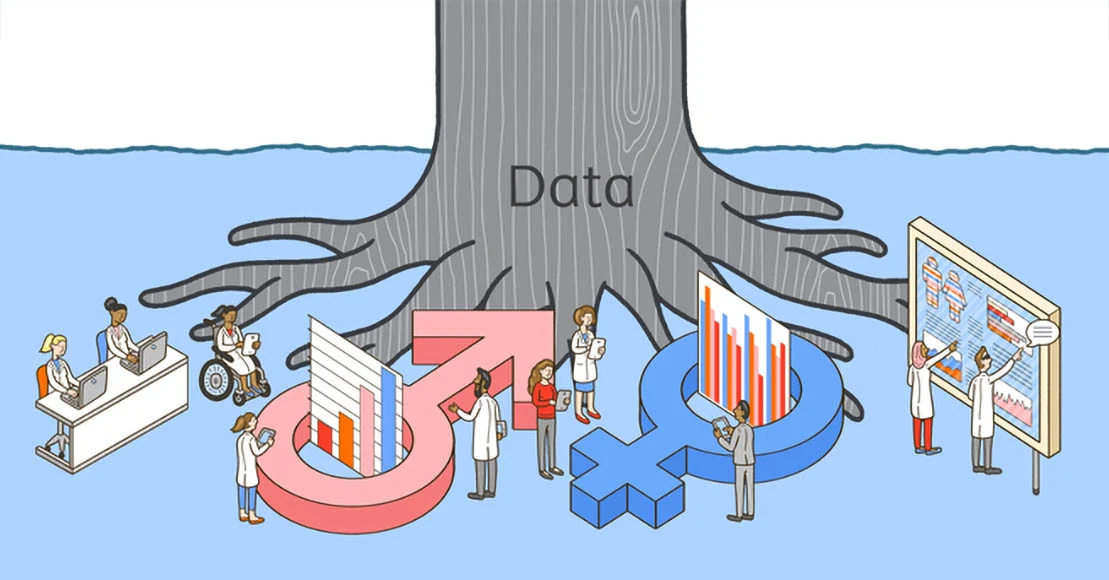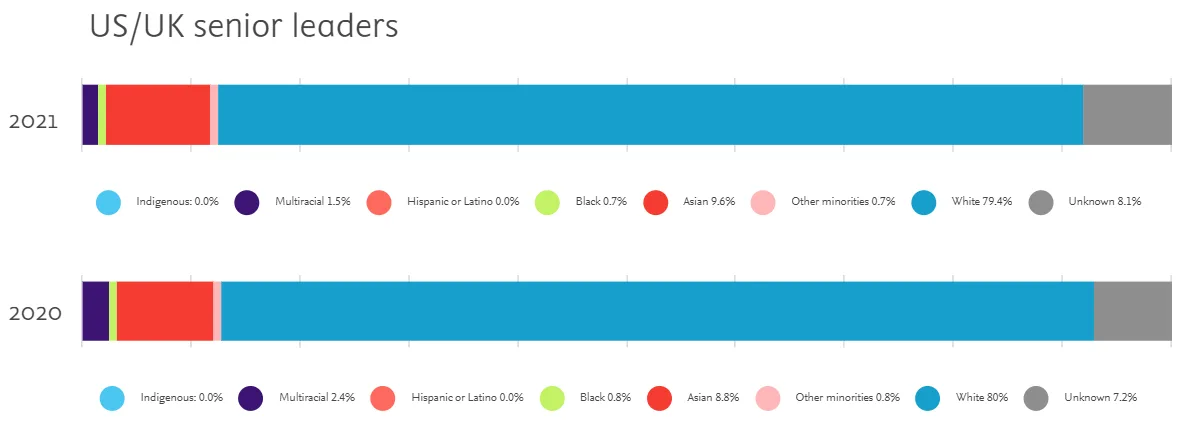Elsevier inclusion & diversity data snapshot
2022年3月8日
Mie-Yun Lee

We are taking action to drive a journey toward greater inclusion, diversity and equity in our workforce.
Every day, over 8,000 Elsevier employees work with the communities we serve to help deliver data-driven knowledge and insights. We strive to help researchers and healthcare professionals advance science and improve outcomes for the benefit of society. And we also seek to deliver provide an inclusive, diverse and equitable workplace so our people can thrive and grow; we deeply believe it is the right thing to do.
"Inclusion and diversity are at the heart of the way we work, think and run our business. To harness the talent and vast capability we have at Elsevier, it is critical to have an environment where everyone can be their best."

KB
Kumsal Bayazit
首席执行官
Studies also show that workforce diversity improves business performance. We know that improving diversity is not an easy task that can be accomplished overnight. Having a vibrant, diverse workplace that reflects the communities in which we live and operate requires commitment, persistence, and the effort of every Elsevier colleague to continually improve our workplace and practices. We all must do our part to tackle systemic inequities, and we are taking action as an organization to drive a multi-year journey toward greater inclusion, diversity and equity. So it is with trust that we share our progress so far, our strong belief that great ideas come from everywhere, and the sincere hope that we can inspire our colleagues and the communities we serve to help us find even more ways to accelerate our journey to become a more inclusive and diverse workforce.
Inclusion and psychological safety
We believe a psychologically safe and inclusive environment is fundamental to cultivating a vibrant, diverse workforce where colleagues can thrive. All employees should feel safe to speak up with their ideas, questions, concerns or mistakes and believe that differences are respected. This means creating an environment where colleagues know they will not be punished or humiliated for speaking up with ideas, questions, concerns or mistakes — and one where employees feel valued and can bring their whole selves to work.
Intentionally developing a psychologically safe and inclusive workplace has been a cornerstone of our inclusion and diversity (I&D) efforts. In 2021 alone, thanks to the efforts of more than 70 trained facilitators, we conducted hundreds of workshops and trainings on psychological safety, inclusive behavior and unconscious bias to help our people managers and teams improve their ability to foster open and inclusive working environments.
Our employee survey data indicates that we are making good progress in our journey to ensure all employees feel included and safe to speak up. To continue our progress, we will build on this foundation by strengthening and expanding participation in these current programs.

Inclusion and psychological safety worldwide
Gender equity
We are also committed to gender diversity and equity in our organization.
As we look across our total workforce in the first chart, we see that we have attained good gender balance, with 51.8% female and 47.9% male. Having a gender-balanced workforce is an important part of our overall journey to having a diverse workforce.
We see continued room for improvement when it comes to gender representation at manager and senior leadership levels. 45.6% of our managers are female and 54.4% male, with steady progress over the years. We have more work to do at the senior leadership level, with 33.5% female and 66.5% male.
To improve gender representation across all levels of the organization, we are focusing on strengthening the internal talent pipeline. Since 2019, we have held an annual Developing Talent for Gender Equity program — a 9-month program designed to proactively increase gender balance in senior leadership roles by ensuring that individuals who wish to develop into senior leaders can gain the education and exposure to enable them to realize their ambitions. Program alumni form a community of peers, mentors, sponsors and role models to share leadership experiences and provide support.
We also offer a formal 6-month RELX NetWorx Mentorship to support the growth and development of all employees with a track focused on women in leadership. The program has been offered since 2019 and recognizes that effective growth and development can often be gained through 1:1 interaction with others across RELX, our parent company. Hundreds of employees have participated in the program, with over 70% of mentor-mentee connections involving people from different business divisions and geographies.
Understanding that our current data reflects sexual identity, not gender identity, we will also be working with RELX, our parent company, to collect more relevant gender identity information with the consent of our colleagues.

Gender equity
Race & ethnicity
Another critical dimension we are actively working to address is racial and ethnic diversity. Currently, we are only able to report on the racial and ethnic diversity of our US- and UK-based colleagues; we have decided to share this data now rather than wait until global data are available.
This chart shows the racial and ethnic diversity of our US- and UK-based employees over the last two years.
Overall, 19.4% of all employees across the two countries represent a racial or ethnic minority.
This has improved from 17.6% in 2020 and represents good year-on-year progress. However, we know we have a lot more progress to make as specific racial/ethnic minorities are underrepresented relative to their populations.
When we focus on racially and ethnically diversity among managers and senior leaders, we see an even more pronounced need to improve our minority representation, with 14.5% and 12.5% respectively. This represents limited progress from the previous year, and we know this is not good enough.
To help improve our representation, we have focused on making our recruitment process more inclusive. We developed inclusive training and guides for hiring managers and implemented a tool that ensures our job postings are written to be inclusive and attract a wide and diverse pool of candidates.
We also launched our first Rising TIDE internship program in 2021. This paid internship program gave nine US college students from racially and socioeconomically diverse backgrounds the opportunity to spend the summer working at Elsevier. We were able to extend six offers for full-time employment from this talented cohort, of which three interns have accepted their offers. In 2022, we are expanding this program to the UK. We found this pilot program to be a wonderful experience for all who participated — interns and Elsevier colleagues alike.
In the coming year, we will continue to focus on our talent acquisition process and how we develop our internal pipeline of diverse talent. Having seen the benefit of the Gender Equity talent development programs, we will be rolling out a formal talent development program for Minority Equity this year. In addition, we will explore ways to improve our workforce diversity data from a race and ethnicity perspective and across our other dimensions.

US-UK employees

US-UK managers

US-UK senior leaders
To help improve our representation, we have focused on making our recruitment process more inclusive. We developed inclusive training and guides for hiring managers and implemented a tool that ensures our job postings are written to be inclusive and attract a wide and diverse pool of candidates.
We also launched our first Rising TIDE internship program in 2021. This paid internship program gave nine US college students from racially and socioeconomically diverse backgrounds the opportunity to spend the summer working at Elsevier. We were able to extend six offers for full-time employment from this talented cohort, of which three interns have accepted their offers. In 2022, we are expanding this program to the UK. We found this pilot program to be a wonderful experience for all who participated — interns and Elsevier colleagues alike.
In the coming year, we will continue to focus on our talent acquisition process and how we develop our internal pipeline of diverse talent. Having seen the benefit of the Gender Equity talent development programs, we will be rolling out a formal talent development program for Minority Equity this year. In addition, we will explore ways to improve our workforce diversity data from a race and ethnicity perspective and across our other dimensions.
Pride, disabilities and generations
Elsevier has had a longstanding commitment to support our LGBTQIA+ community. We are also committed to better understanding and representing the needs of employees with disabilities. While many efforts exist, we do not yet have demographic data to provide insight into these communities, and we look to improve our insights across the age spectrum as well. We will be working with internal leaders to address data collection as a key priority in the coming year.
About the data
This snapshot is based on data found in the RELX Corporate Responsibility Report and reflects the Elsevier portion of the people data. The source and definition of the data used can be found in our RELX reporting guidelines.
